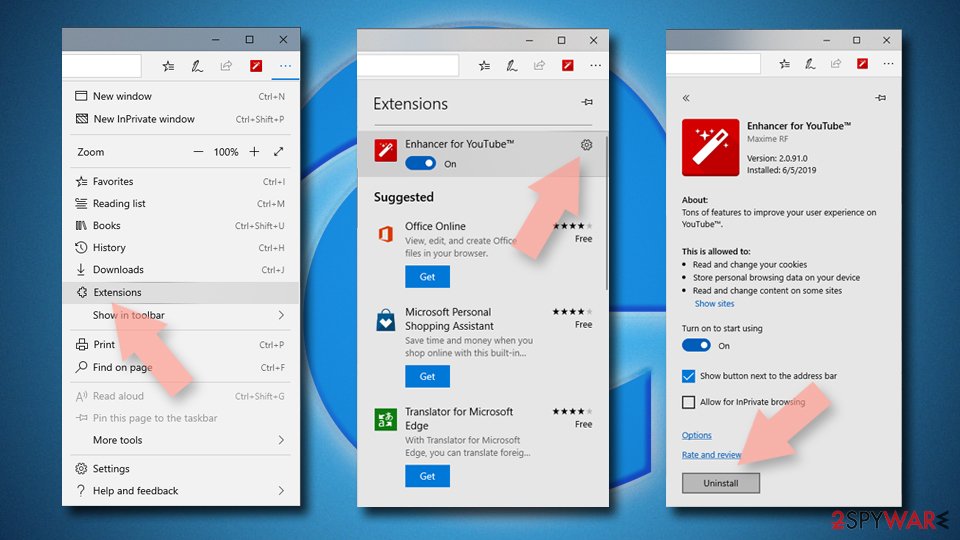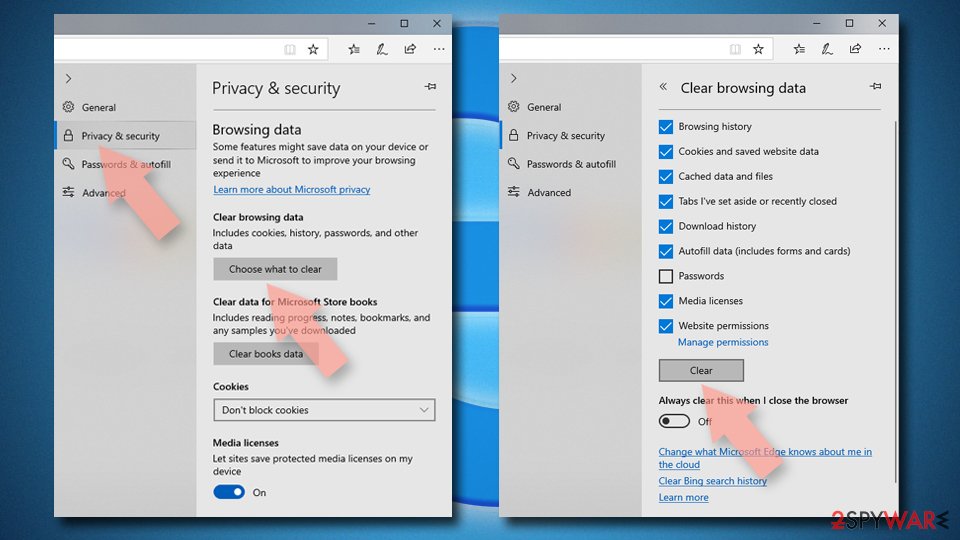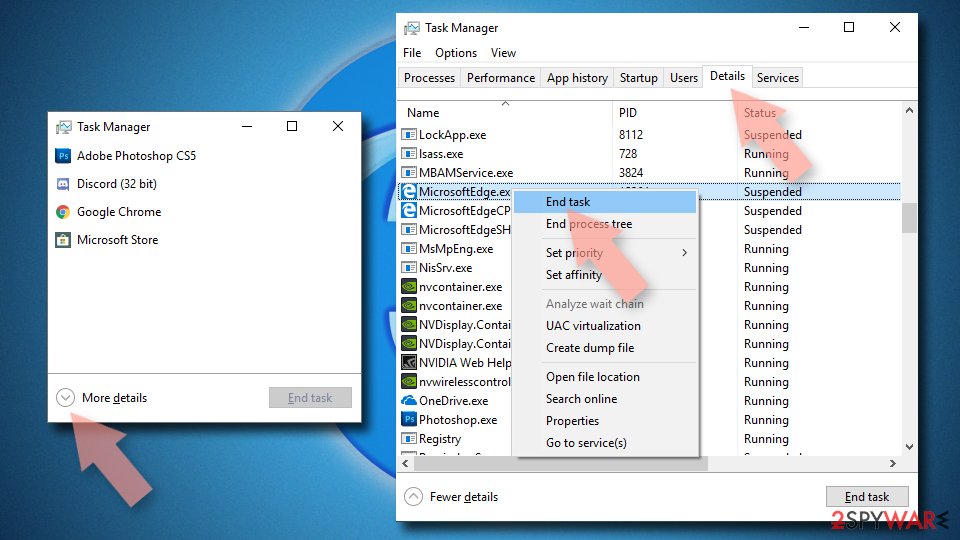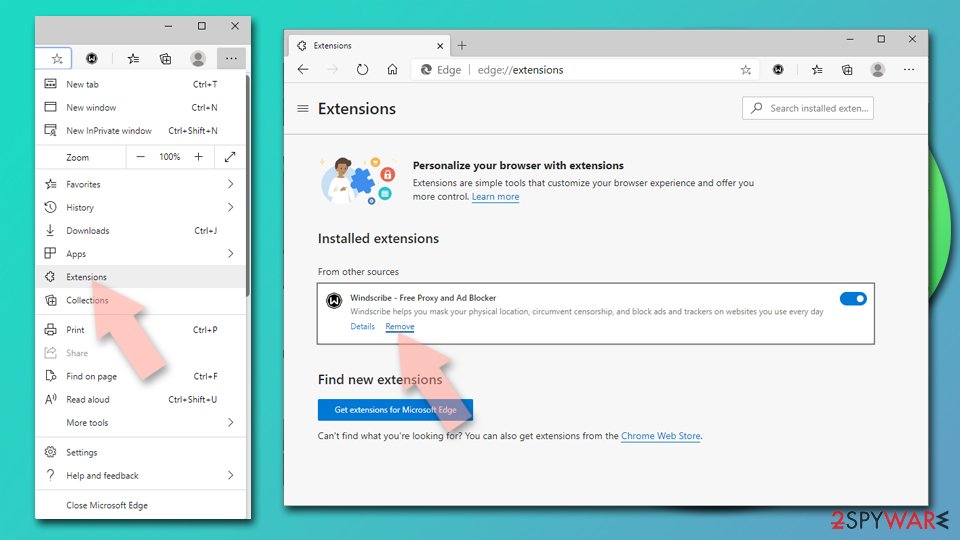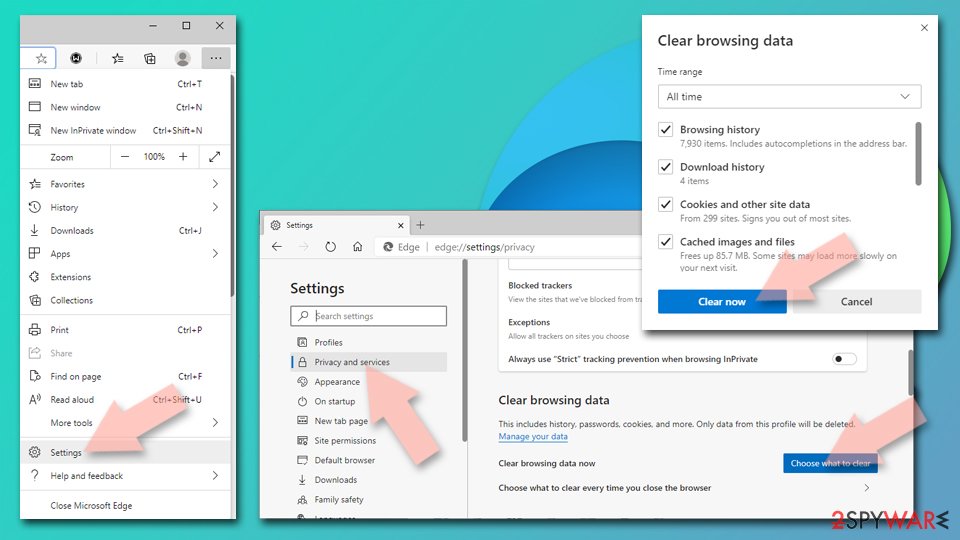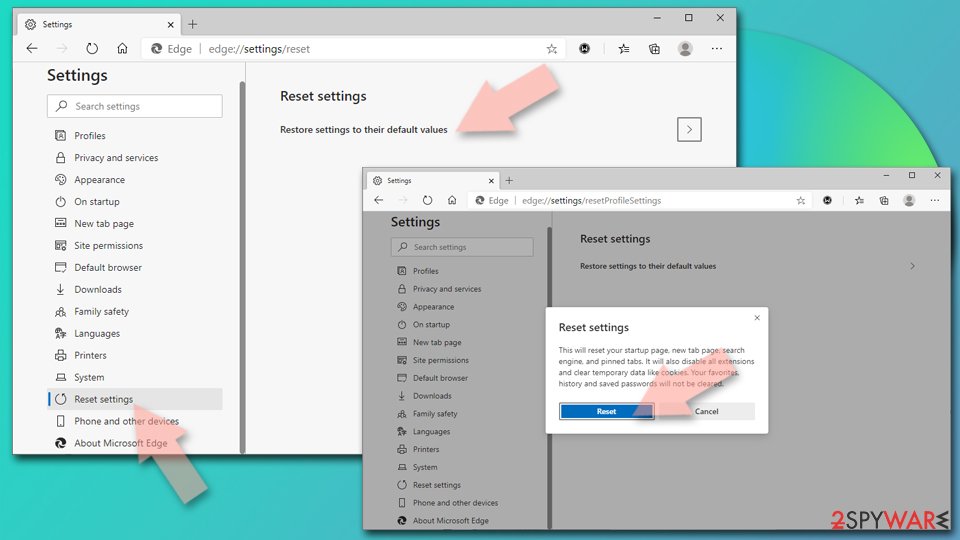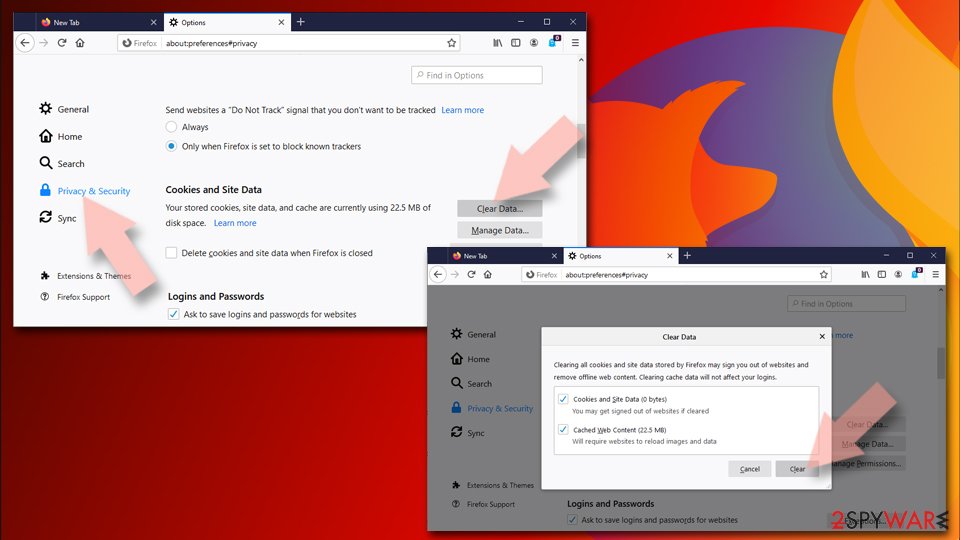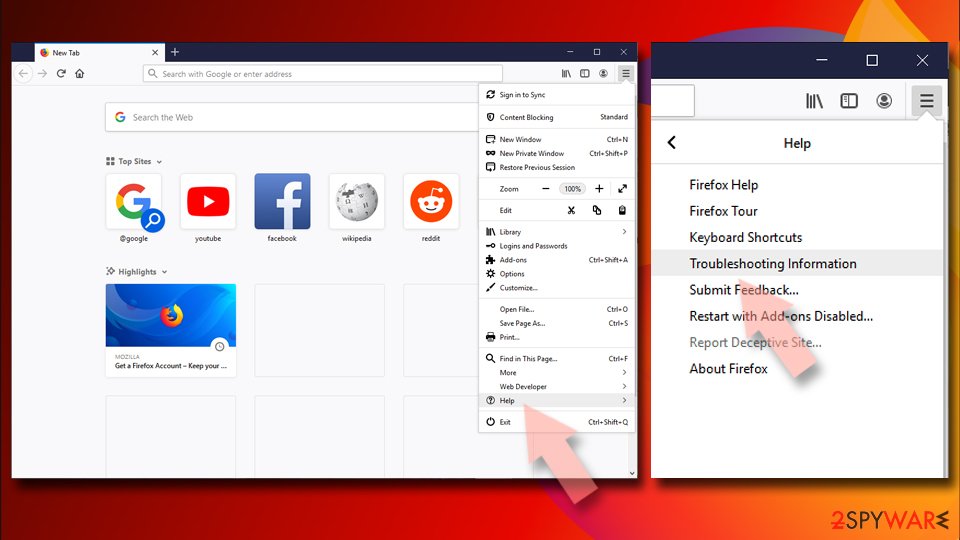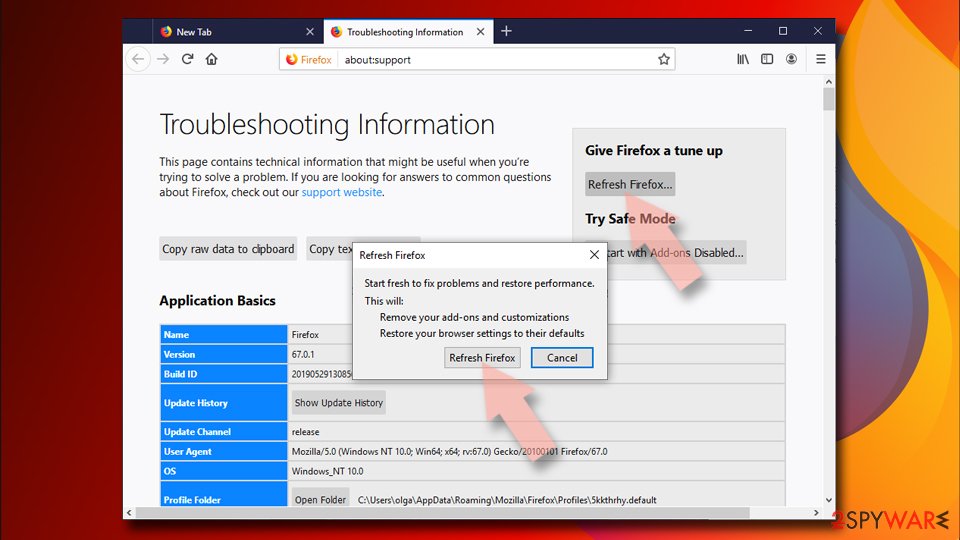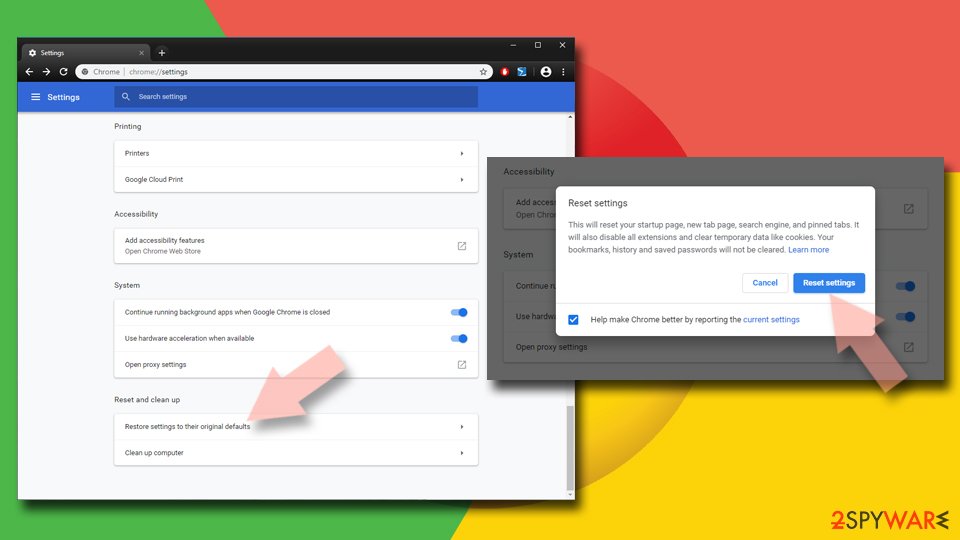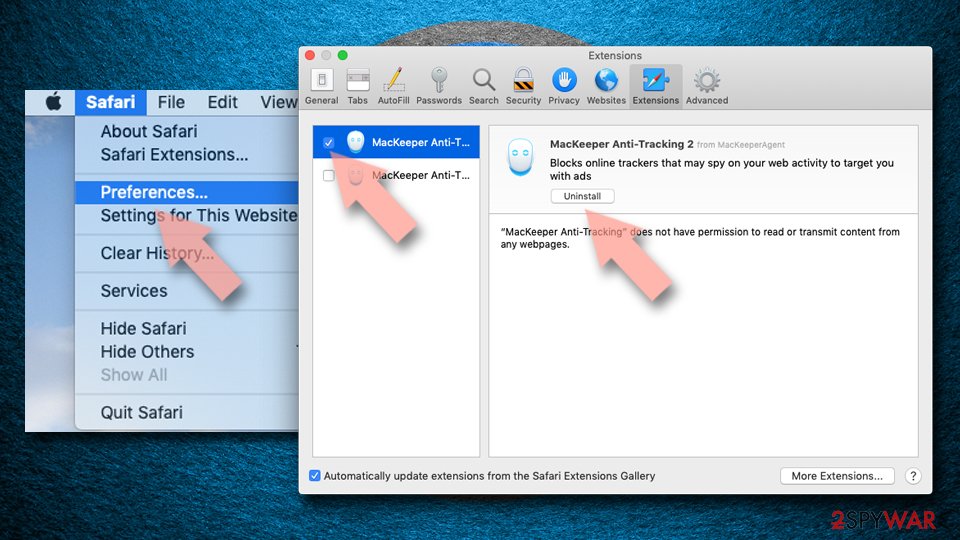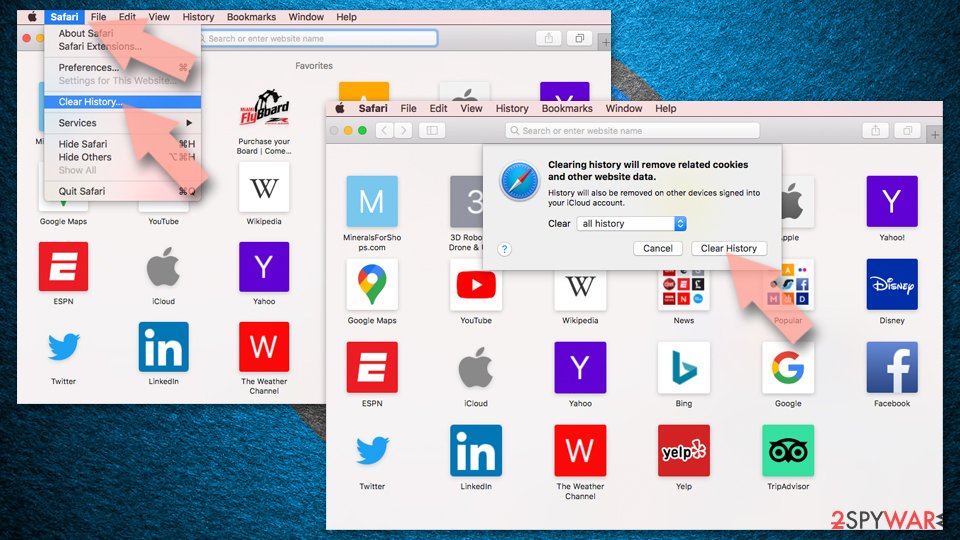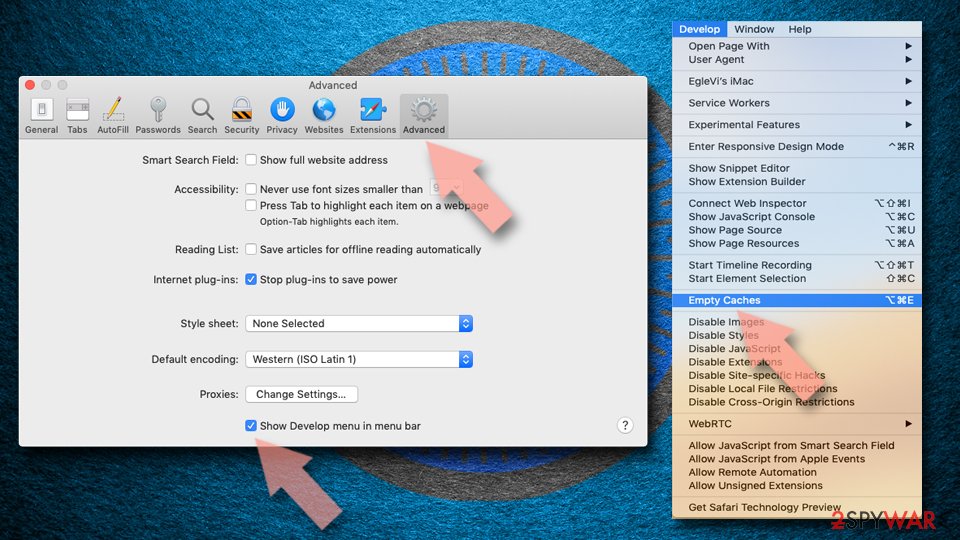Pushokey.com (Free Instructions) - Removal Guide
Pushokey.com Removal Guide
What is Pushokey.com?
Pushokey.com is a redirect virus that displays fake messages reporting about the infected device

| Name | Pushokey.com |
|---|---|
| Type | Adware |
| Category | Potentially unwanted program |
| Main symptoms | Delivers alert about infected system, pop-up ads, and causes redirects |
| Affects | Google Chrome, Internet Explorer, Mozilla Firefox |
| Distribution | Software bundles during insecure freeware installations |
| Elimination | Clean the device using FortectIntego and remove Pushokey.com |
Pushokey.com virus is called like that by many users because of the silent infiltration that happens without your permission. Unfortunately, you cannot control the infiltration process because, in most cases, these potentially unwanted programs come during the insecure freeware installation when you skip through important steps.
Additionally to this infiltration method, Pushokey.com can install other programs or browser extensions, add-ons without your permission or knowledge. You may notice browser changes, slowness or unwanted content first but the main intruder – adware is the one that you need to eliminate to forget about these redirects.[2]
Pushokey.com redirect can also:
- inject advertising banners to websites you often visit;
- deliver pop-ups and redirects with commercial content;
- display promotional content about fake updates or software installs;
- infect commonly visited sites with hyperlinks.
Pushokey.com is the cyber threat that can make your time online difficult because it scares people with messages about the malware on the system.[3] People get in-browser pop-ups and alerts appearing from the system in the taskbar that inform about potential intruders. Although these messages are fake and you shouldn't be scared, the adware program termination requires professional help.
Security experts[4] recommend employing reliable tools like FortectIntego for Pushokey.com removal because silent intruders often install other applications and this way remains persistent on the device. Additionally, adware and other cyber threats can alter registry entries to run on the system automatically.
You need to remove Pushokey.com from the system as soon as possible so you can avoid virus damage on the computer. You also should check your browsers individually to make sure no extensions or toolbars get installed without your permission.
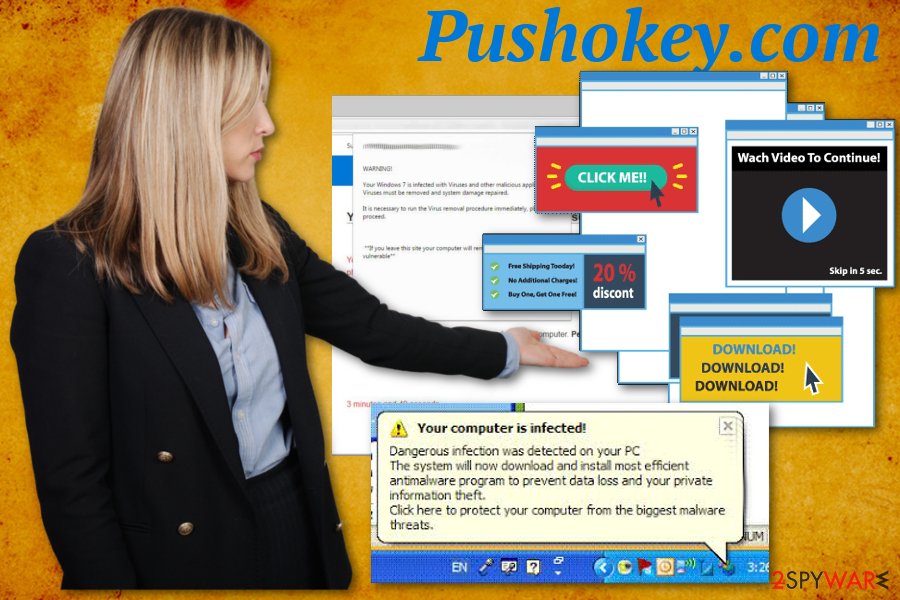
Always opt for the Advanced installations if you want to avoid these infiltrations
This adware belongs to a category of programs that commonly get bundled with freeware and distributed during installations and downloads. You cannot see all unwanted programs if you skip through installation steps and this way every application gets installed on the machine automatically.
When you opt for Advanced or Custom installation processes, you can de-select unwanted programs and download the software you need. This step and choosing software sources wisely should be in your every routine while you download and install programs. Official websites, reputable providers ensure that there is no additional content bundled with your applications.
Terminate Pushokey.com as soon as possible and clean the system entirely
For the best Pushokey.com removal results, you should rely on professional tools and a full system scan. This is the best tip we as researchers can give you because all those potentially unwanted programs tend to be more persistent than you think in the first place.
Remove Pushokey.com and all similar or possibly related programs in one step with antivirus or PC repair tools. Employ anti-malware that you trust or choose from our suggestions and scan the device fully. Then you need to follow the suggested steps and terminate indicated intruders.
You may remove virus damage with a help of FortectIntego. SpyHunter 5Combo Cleaner and Malwarebytes are recommended to detect potentially unwanted programs and viruses with all their files and registry entries that are related to them.
Getting rid of Pushokey.com. Follow these steps
Uninstall from Windows
Clean the device thoroughly to get rid of Pushokey.com virus
Instructions for Windows 10/8 machines:
- Enter Control Panel into Windows search box and hit Enter or click on the search result.
- Under Programs, select Uninstall a program.

- From the list, find the entry of the suspicious program.
- Right-click on the application and select Uninstall.
- If User Account Control shows up, click Yes.
- Wait till uninstallation process is complete and click OK.

If you are Windows 7/XP user, proceed with the following instructions:
- Click on Windows Start > Control Panel located on the right pane (if you are Windows XP user, click on Add/Remove Programs).
- In Control Panel, select Programs > Uninstall a program.

- Pick the unwanted application by clicking on it once.
- At the top, click Uninstall/Change.
- In the confirmation prompt, pick Yes.
- Click OK once the removal process is finished.
Delete from macOS
Remove items from Applications folder:
- From the menu bar, select Go > Applications.
- In the Applications folder, look for all related entries.
- Click on the app and drag it to Trash (or right-click and pick Move to Trash)

To fully remove an unwanted app, you need to access Application Support, LaunchAgents, and LaunchDaemons folders and delete relevant files:
- Select Go > Go to Folder.
- Enter /Library/Application Support and click Go or press Enter.
- In the Application Support folder, look for any dubious entries and then delete them.
- Now enter /Library/LaunchAgents and /Library/LaunchDaemons folders the same way and terminate all the related .plist files.

Remove from Microsoft Edge
Delete unwanted extensions from MS Edge:
- Select Menu (three horizontal dots at the top-right of the browser window) and pick Extensions.
- From the list, pick the extension and click on the Gear icon.
- Click on Uninstall at the bottom.

Clear cookies and other browser data:
- Click on the Menu (three horizontal dots at the top-right of the browser window) and select Privacy & security.
- Under Clear browsing data, pick Choose what to clear.
- Select everything (apart from passwords, although you might want to include Media licenses as well, if applicable) and click on Clear.

Restore new tab and homepage settings:
- Click the menu icon and choose Settings.
- Then find On startup section.
- Click Disable if you found any suspicious domain.
Reset MS Edge if the above steps did not work:
- Press on Ctrl + Shift + Esc to open Task Manager.
- Click on More details arrow at the bottom of the window.
- Select Details tab.
- Now scroll down and locate every entry with Microsoft Edge name in it. Right-click on each of them and select End Task to stop MS Edge from running.

If this solution failed to help you, you need to use an advanced Edge reset method. Note that you need to backup your data before proceeding.
- Find the following folder on your computer: C:\\Users\\%username%\\AppData\\Local\\Packages\\Microsoft.MicrosoftEdge_8wekyb3d8bbwe.
- Press Ctrl + A on your keyboard to select all folders.
- Right-click on them and pick Delete

- Now right-click on the Start button and pick Windows PowerShell (Admin).
- When the new window opens, copy and paste the following command, and then press Enter:
Get-AppXPackage -AllUsers -Name Microsoft.MicrosoftEdge | Foreach {Add-AppxPackage -DisableDevelopmentMode -Register “$($_.InstallLocation)\\AppXManifest.xml” -Verbose

Instructions for Chromium-based Edge
Delete extensions from MS Edge (Chromium):
- Open Edge and click select Settings > Extensions.
- Delete unwanted extensions by clicking Remove.

Clear cache and site data:
- Click on Menu and go to Settings.
- Select Privacy, search and services.
- Under Clear browsing data, pick Choose what to clear.
- Under Time range, pick All time.
- Select Clear now.

Reset Chromium-based MS Edge:
- Click on Menu and select Settings.
- On the left side, pick Reset settings.
- Select Restore settings to their default values.
- Confirm with Reset.

Remove from Mozilla Firefox (FF)
Since the silent intruder Pushokey.com can install other unwanted content, you should check your browser separately
Remove dangerous extensions:
- Open Mozilla Firefox browser and click on the Menu (three horizontal lines at the top-right of the window).
- Select Add-ons.
- In here, select unwanted plugin and click Remove.

Reset the homepage:
- Click three horizontal lines at the top right corner to open the menu.
- Choose Options.
- Under Home options, enter your preferred site that will open every time you newly open the Mozilla Firefox.
Clear cookies and site data:
- Click Menu and pick Settings.
- Go to Privacy & Security section.
- Scroll down to locate Cookies and Site Data.
- Click on Clear Data…
- Select Cookies and Site Data, as well as Cached Web Content and press Clear.

Reset Mozilla Firefox
If clearing the browser as explained above did not help, reset Mozilla Firefox:
- Open Mozilla Firefox browser and click the Menu.
- Go to Help and then choose Troubleshooting Information.

- Under Give Firefox a tune up section, click on Refresh Firefox…
- Once the pop-up shows up, confirm the action by pressing on Refresh Firefox.

Remove from Google Chrome
Make sure that every suspicious browser extension or add-on is unintstalled
Delete malicious extensions from Google Chrome:
- Open Google Chrome, click on the Menu (three vertical dots at the top-right corner) and select More tools > Extensions.
- In the newly opened window, you will see all the installed extensions. Uninstall all the suspicious plugins that might be related to the unwanted program by clicking Remove.

Clear cache and web data from Chrome:
- Click on Menu and pick Settings.
- Under Privacy and security, select Clear browsing data.
- Select Browsing history, Cookies and other site data, as well as Cached images and files.
- Click Clear data.

Change your homepage:
- Click menu and choose Settings.
- Look for a suspicious site in the On startup section.
- Click on Open a specific or set of pages and click on three dots to find the Remove option.
Reset Google Chrome:
If the previous methods did not help you, reset Google Chrome to eliminate all the unwanted components:
- Click on Menu and select Settings.
- In the Settings, scroll down and click Advanced.
- Scroll down and locate Reset and clean up section.
- Now click Restore settings to their original defaults.
- Confirm with Reset settings.

Delete from Safari
Remove unwanted extensions from Safari:
- Click Safari > Preferences…
- In the new window, pick Extensions.
- Select the unwanted extension and select Uninstall.

Clear cookies and other website data from Safari:
- Click Safari > Clear History…
- From the drop-down menu under Clear, pick all history.
- Confirm with Clear History.

Reset Safari if the above-mentioned steps did not help you:
- Click Safari > Preferences…
- Go to Advanced tab.
- Tick the Show Develop menu in menu bar.
- From the menu bar, click Develop, and then select Empty Caches.

After uninstalling this potentially unwanted program (PUP) and fixing each of your web browsers, we recommend you to scan your PC system with a reputable anti-spyware. This will help you to get rid of Pushokey.com registry traces and will also identify related parasites or possible malware infections on your computer. For that you can use our top-rated malware remover: FortectIntego, SpyHunter 5Combo Cleaner or Malwarebytes.
How to prevent from getting adware
Choose a proper web browser and improve your safety with a VPN tool
Online spying has got momentum in recent years and people are getting more and more interested in how to protect their privacy online. One of the basic means to add a layer of security – choose the most private and secure web browser. Although web browsers can't grant full privacy protection and security, some of them are much better at sandboxing, HTTPS upgrading, active content blocking, tracking blocking, phishing protection, and similar privacy-oriented features. However, if you want true anonymity, we suggest you employ a powerful Private Internet Access VPN – it can encrypt all the traffic that comes and goes out of your computer, preventing tracking completely.
Lost your files? Use data recovery software
While some files located on any computer are replaceable or useless, others can be extremely valuable. Family photos, work documents, school projects – these are types of files that we don't want to lose. Unfortunately, there are many ways how unexpected data loss can occur: power cuts, Blue Screen of Death errors, hardware failures, crypto-malware attack, or even accidental deletion.
To ensure that all the files remain intact, you should prepare regular data backups. You can choose cloud-based or physical copies you could restore from later in case of a disaster. If your backups were lost as well or you never bothered to prepare any, Data Recovery Pro can be your only hope to retrieve your invaluable files.
- ^ Pushokey.com "virus protection". Malwarebytes. Community forum.
- ^ J. D. Biersdorfer. Battling adware that redirects your browser. NYtimes. Breaking news, world news & multimedia.
- ^ Scareware. Wikipedia. The free encyclopedia.
- ^ Usunwirusa. Usunwirusa. Spyware related news.





